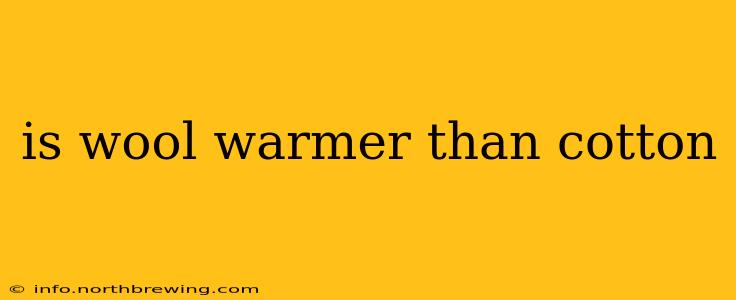The age-old question of wool versus cotton warmth sparks debate among outdoor enthusiasts, clothing manufacturers, and anyone seeking cozy comfort. The simple answer is yes, wool is generally warmer than cotton, but understanding why requires delving into the unique properties of each fiber. This comprehensive guide will explore the thermal characteristics of wool and cotton, explaining why wool often triumphs in cold weather scenarios.
How Does Wool Trap Heat?
Wool's superior warmth stems from its unique fiber structure. Unlike cotton's smooth, hollow fibers, wool fibers are crimped and covered in microscopic scales. This creates numerous air pockets within the fabric, trapping warm air close to the body. This air insulation is key to wool's thermal performance. The more air trapped, the more effectively body heat is retained.
Furthermore, wool's inherent ability to absorb moisture without feeling damp contributes to its warmth. Unlike cotton, which absorbs moisture and then loses its insulating properties, wool fibers can hold a significant amount of moisture (up to 30% of their weight) without feeling wet or losing their insulating capacity. This moisture-wicking property helps to regulate body temperature and prevent chilling.
Why Cotton Feels Cold When Wet
Cotton, while breathable and comfortable in warmer climates, lacks the same insulating properties as wool. Once cotton absorbs moisture (sweat or rain), it loses its ability to trap air. This leads to a significant decrease in insulation, leaving the wearer feeling cold and damp. The wet cotton fibers conduct heat away from the body more readily than dry wool fibers, exacerbating the chilling effect.
What About Different Weights of Wool and Cotton?
The warmth of both wool and cotton fabrics is also affected by their weight and density. A heavier wool garment will naturally be warmer than a lighter one, and the same applies to cotton. However, even when comparing fabrics of similar weights, wool generally maintains its superior warmth due to its inherent fiber structure and moisture-wicking capabilities.
How is the warmth of wool and cotton affected by the weave?
The weave of the fabric also influences its warmth. Tightly woven fabrics of both materials tend to trap more air and provide better insulation than loosely woven fabrics. However, wool's inherent properties give it an advantage even with similar weave structures.
What about blends of wool and cotton?
Blends of wool and cotton aim to combine the best properties of both fibers. Wool provides warmth and moisture-wicking, while cotton offers breathability and softness. The warmth of a wool/cotton blend will depend on the proportion of each fiber. A higher wool content will result in a warmer garment.
Are there any exceptions where cotton might be warmer?
In very specific, unusual circumstances, cotton might feel warmer. For example, if a very tightly woven, thick cotton garment is completely dry and the surrounding environment is relatively dry, it might offer comparable insulation to a lighter wool garment. However, this is an exception, not the rule. The moment the cotton gets wet, its insulating properties plummet.
In Conclusion: Wool's Superior Warmth
In most situations and across a range of conditions, wool provides superior warmth compared to cotton. Its unique fiber structure, moisture-wicking abilities, and inherent air-trapping capacity make it the preferred choice for cold-weather clothing. While cotton offers breathability and comfort in warmer temperatures, wool remains the champion when it comes to keeping you warm and dry in chilly conditions.
